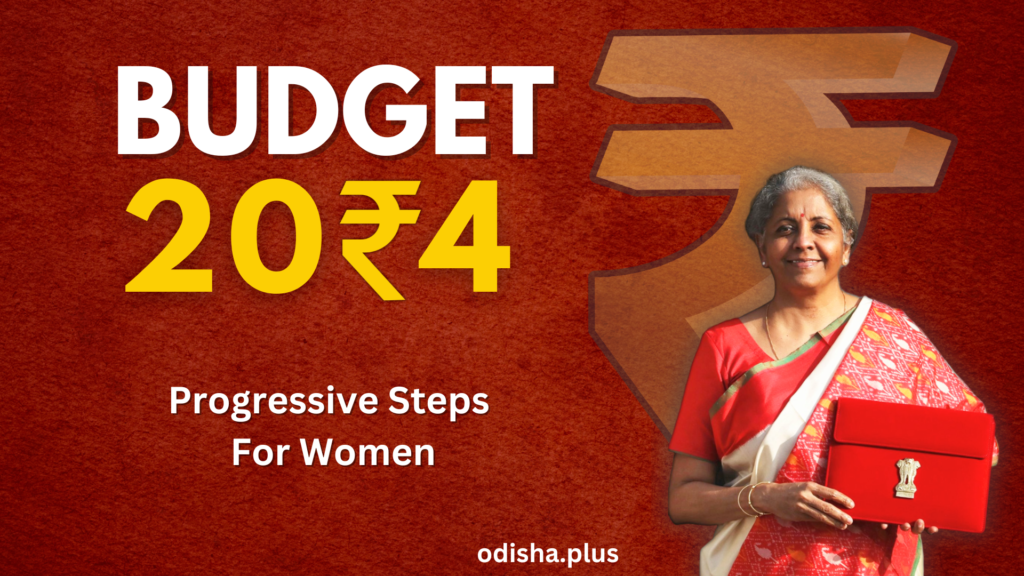Dr. Navya Gubbi Sateeshchandra

On July 23, 2024, under the tagline “Empower Her, Empower India,” Finance Minister Nirmala Sitharaman presented India’s much-anticipated budget, placing a significant emphasis on women-centric policies and initiatives. This budget, reflecting a blend of progressive vision and pragmatic steps, has garnered diverse reactions from various quarters. With the spotlight firmly on women’s empowerment, the budget aims to address long-standing gender disparities and provide women with greater opportunities in various spheres of life.
Under the vision of “Vikshith Bharat” (Prosperous India), the government seeks to create an inclusive growth environment where women play a central role. The budget underscores the importance of elevating women’s status in society through targeted financial support and structural reforms. Initiatives range from increased funding for female education to substantial investments in healthcare, entrepreneurship, and safety measures.
While many hail it as a transformative move for women’s empowerment, others urge a critical examination to ensure these measures translate into tangible benefits. Critics emphasize the need for efficient implementation, transparency, and addressing the socio-economic barriers that women continue to face. Here’s an analytical perspective on how this budget fares in addressing women’s needs and aspirations, balancing optimism with scrutiny to evaluate its potential impact on India’s future.
Appreciative Lens: Progressive Steps Toward Women’s Empowerment
- Increased Allocation for Women-Centric Schemes: The 2024 budget has significantly increased allocations for key women-centric schemes such as the Beti Bachao Beti Padhao initiative and the Pradhan Mantri Matru Vandana Yojana. These schemes are pivotal in promoting female education, reducing female infanticide, and supporting maternal health, respectively. The enhanced funding is a commendable step towards reinforcing these crucial social programs.
- Support for Women Entrepreneurs: Recognizing the potential of women entrepreneurs, the budget has proposed various incentives and subsidies aimed at fostering women-led startups. The creation of a dedicated Women Entrepreneurship Fund aims to provide easier access to credit and resources, empowering women to participate actively in the economic landscape.
- Health and Sanitation Initiatives: The budget has introduced new healthcare schemes targeting women’s health, including measures to improve maternal healthcare facilities in rural areas. Additionally, the allocation for sanitation facilities, particularly in schools and public places, aims to ensure a hygienic environment, promoting the health and well-being of women and girls.
- Education and Skill Development: Emphasizing the importance of education, the budget has increased funding for scholarships and skill development programs for women. This move is expected to bridge the gender gap in education and enhance women’s employability in various sectors.
Critical Lens: Areas Needing Attention and Improvement
- Implementation Challenges: While the budget allocates funds generously, the success of these initiatives hinges on effective implementation. Past experiences reveal that bureaucratic red tape and corruption can impede the efficient deployment of resources. There is a need for robust monitoring mechanisms to ensure that the benefits reach the intended recipients.
- Limited Focus on Safety and Security: The budget falls short in addressing women’s safety and security comprehensively. Despite the increasing instances of gender-based violence, there is a lack of substantial allocation for improving law enforcement and judicial processes to protect women. More investment in women’s safety infrastructure, including helplines, shelters, and fast-track courts, is essential.
- Economic Participation: Although there are incentives for women entrepreneurs, the budget does not sufficiently address the broader challenges women face in the workforce. Issues like wage disparity, lack of childcare facilities, and flexible working conditions remain inadequately addressed. A more holistic approach is needed to create an inclusive work environment that supports women in balancing their professional and personal lives.
- Rural Outreach: The benefits of the budget’s women-centric schemes may not effectively penetrate rural areas where they are needed the most. Women in rural India continue to face significant barriers to accessing education, healthcare, and financial services. Tailored strategies to reach and support these women are crucial for the budget’s initiatives to have a meaningful impact.
- Addressing Gender-Based Violence: The budget has been critiqued for not allocating sufficient resources to enhance women’s safety and security. Despite the increasing instances of gender-based violence, there is a lack of substantial investment in improving law enforcement and judicial processes to protect women. Critics call for more investment in women’s safety infrastructure, including helplines, shelters, and fast-track courts.
- Wage Disparity and Workplace Conditions: Although there are incentives for women entrepreneurs, the budget does not sufficiently address broader challenges faced by women in the workforce. Issues such as wage disparity, inadequate childcare facilities, and lack of flexible working conditions remain inadequately addressed. Critics argue that a more holistic approach is needed to create an inclusive work environment that supports women in balancing their professional and personal lives.
- Access in Rural Areas: Critics point out that the benefits of the budget’s women-centric schemes may not effectively penetrate rural areas, where they are needed the most. Women in rural India continue to face significant barriers to accessing education, healthcare, and financial services. Tailored strategies to reach and support these women are crucial for the budget’s initiatives to have a meaningful impact. For example, rural literacy programs need a 30% boost in funding to achieve their targets.
- Maternal Health and Sanitation: While the budget introduces new healthcare schemes targeting women’s health, including measures to improve maternal healthcare facilities in rural areas, there are concerns about the adequacy and accessibility of these services. Critics highlight the need for more comprehensive healthcare initiatives that address a wider range of women’s health issues, from reproductive health to mental health. Additionally, the budget’s allocation for sanitation facilities, though increased, may still fall short of ensuring universal access, especially in rural schools and public places.
The 2024 budget presented by Nirmala Sitharaman undeniably marks a progressive step towards women’s empowerment in India. The increased funding for education, health, and entrepreneurship signals the government’s commitment to uplifting women. However, the real test lies in the meticulous and transparent implementation of these initiatives. Addressing the critical gaps, particularly in safety, workforce inclusion, and rural outreach, will be essential for translating this vision into reality. By combining appreciation for the forward-thinking measures with constructive criticism, we can hope for a future where women in India are truly empowered to realize their full potential.
Dr. Navya is a professor at berlin school of business & innovation, Berlin, Germany. Views expressed are personal























